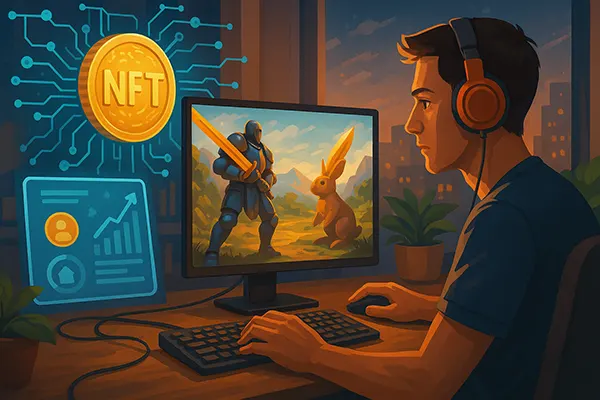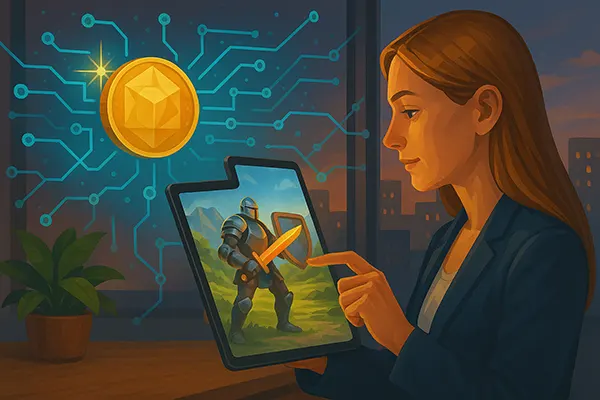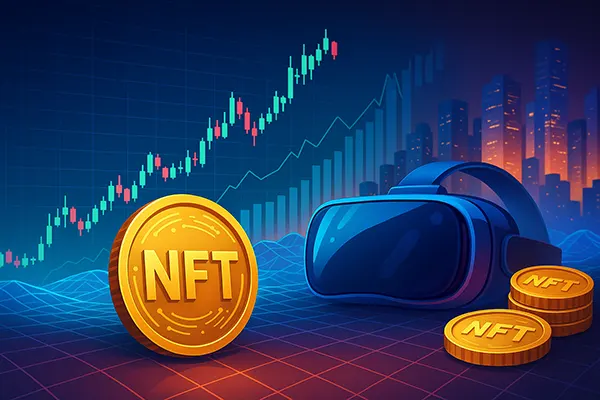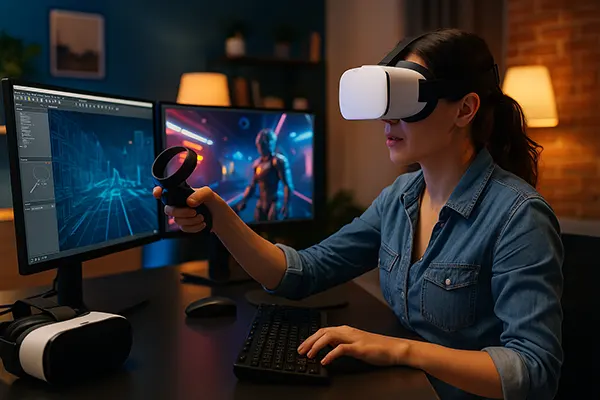
Are NFTs Making a Comeback? How Web3 Games in 2025 Open New Earning Opportunities from Home
After a period of scepticism and market downturns, NFTs and Web3 gaming are re-emerging in 2025 with renewed utility, realism, and profitability. The early days of speculative token flipping are largely behind us. Now, the new generation of decentralised games combines quality gameplay with tangible earning potential, offering a legitimate route for players to earn from home.
Real Use Cases and Sustainable Economies
One of the key reasons NFTs are finding relevance again in 2025 is the shift towards utility-driven assets within Web3 games. Instead of focusing on scarce digital art, modern NFT games prioritise items that offer value within the ecosystem — weapons, skins, land plots, and even characters that influence gameplay. Projects like “Illuvium,” “Big Time,” and “My Pet Hooligan” now centre on sustainable models where in-game assets have defined utility and lifecycle.
Developers have learnt from the failures of the previous cycle. Tokenomics in 2025 are built around deflationary mechanics, limited minting, and consistent burn functions. This allows games to maintain economic equilibrium without flooding the market. For instance, titles such as “Aurory” and “Ember Sword” require players to strategically use and recycle resources, fostering genuine demand.
Furthermore, interoperable NFTs are becoming more common. With the expansion of layer-2 solutions like Immutable X and Ronin Network, users can move their NFTs across games, increasing asset longevity. This interoperability ensures users aren’t tied to a single title, giving broader appeal to NFT ownership.
From Passive Collectibles to Active Income Tools
Today’s Web3 games are not just about collecting digital trophies. Players can actively monetise their time through skill-based competitions, staking mechanics, and ownership of in-game infrastructure. This shift towards participation-based rewards provides recurring income opportunities beyond one-time sales of NFTs.
For example, in “The Sandbox” and “Decentraland”, virtual landowners can build interactive environments that generate income through ticketed access or integrated mini-games. Other games offer rental markets where NFT owners lend rare assets to other players for shared profit, democratising access and spreading earnings across user tiers.
Also notable is the rise of “guild integration.” Many games now support automated tools for managing player scholarships — structured agreements where asset owners partner with gamers for shared revenue. These systems are transparent and powered by smart contracts, increasing trust and appeal among mainstream users.
The Role of AI and Blockchain in 2025 Game Design
Web3 gaming in 2025 benefits heavily from integration with artificial intelligence and improved blockchain infrastructure. AI is used to tailor game experiences, moderate in-game economies, and provide dynamic interactions with non-player characters. These features drastically elevate the entertainment value of blockchain games.
On the blockchain side, high-speed rollups and zero-knowledge proofs are being used to ensure ultra-low transaction costs and near-instant settlement. This is crucial for games requiring frequent item trades or micro-transactions, reducing friction and opening Web3 games to users without technical backgrounds.
Security enhancements also matter. Wallet integrations have become more user-friendly, and custodial wallet options are available for those hesitant to self-manage their crypto assets. Games like “Wild Forest” and “MetalCore” now embed blockchain elements seamlessly, making the onboarding process smoother for Web2 audiences transitioning into Web3.
Web3 Games as Social and Creator Platforms
Modern NFT games now serve dual functions — they are both entertainment products and community-driven creation platforms. Players not only interact but co-create within ecosystems. This evolution encourages long-term engagement and amplifies revenue opportunities for creators.
Titles such as “Yuga Labs’ Otherside” allow players to design experiences and mint their own assets, earning from secondary sales and participation fees. These platforms also host regular virtual events — concerts, exhibitions, and esports tournaments — all with blockchain-based ticketing and rewards.
This participatory model means that the value within these games is no longer controlled solely by developers. Instead, user-generated content plays a vital role in the economy, opening up creative income streams for artists, designers, and storytellers alike.

Market Trends and Entry Points for New Players
The NFT gaming sector has rebounded in part thanks to strategic partnerships between Web3 developers and traditional game studios. Studios like Ubisoft, Nexon, and Square Enix have launched hybrid projects incorporating NFT tech within known franchises. This bridges familiarity with innovation, making onboarding less intimidating for traditional players.
There’s also a noticeable shift in funding — venture capital now flows toward sustainable models. In 2025, top-funded projects are those emphasising player retention, low-entry barriers, and strong compliance with regulations. This has weeded out quick-cash schemes and left room for real growth. Governments in countries like the UK, South Korea, and Estonia have also started recognising and regulating digital assets used in games, adding layers of trust and legitimacy.
For new players, mobile-first games with optional wallet integrations serve as ideal entry points. Titles like “Xterio” and “Skyweaver” offer tutorials, fiat payments, and simplified onboarding. These user-friendly features are key to converting casual gamers into Web3 participants without steep learning curves.
Future Outlook: Community, Ownership, and Beyond
Looking ahead, Web3 gaming’s success hinges on community strength and meaningful digital ownership. Players are no longer just consumers; they’re stakeholders with a voice in governance and development. DAOs tied to games vote on economic changes, roadmaps, and new feature integrations, creating democratic ecosystems.
This empowerment leads to player loyalty. Gamers feel invested not just financially, but emotionally. They see their progress, assets, and creative inputs valued and preserved — unlike in traditional gaming where control rests entirely with developers and publishers.
In 2025, the synergy between user ownership, decentralised governance, and real earnings transforms Web3 games into more than entertainment. They are evolving into micro-economies and digital nations — places where people work, create, and thrive, all from the comfort of their homes.




